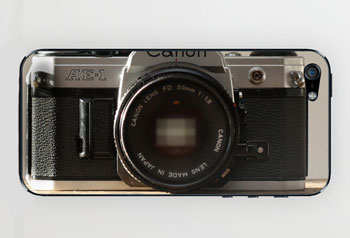Chicago’s Sun-Times recently laid off its entire staff of 28 full-time photographers to replace them with iPhones. Seriously. According to a Sun-Times memo “reporters begin mandatory training on iPhone photography basics following elimination of the paper’s entire photography staff. In the coming days and weeks, we’ll be working with all editorial employees to train and outfit you as much as possible to produce the content we need.” Bang!
This change of policy was not left without eager debate on the Net. Still, there are a few silver lining to this: 28 (!) photographers were given the news. How can a not major newspaper in this day and age afford 28 full-time photographers. Honestly, they were probably the last of their kind and should call themselves lucky that a newspaper kept on paying them for so long.

For zoom shots, tabloid work and sports the Sun-Times will use (cheaper) stringers. But hey for the everyday publishing business the iPhone can do!
The Sun-Times’ intention is, as outlined by its managing editor Craig Newman, that all editorial employees are to be trained and outfitted as much as possible to produce the content the paper needs:
- iPhone photography basics
- Video and basic editing
- Transmission and social media
Now that’s a newspaper publisher’s dream come true: each and every editor triples as a writer, photographer and videographer.
Please note: to be a journalist these days, you have to be able to do three jobs…
Says the paper:
The Sun-Times business is changing rapidly and our audiences are consistently seeking more video content with their news. We have made great progress in meeting this demand and are focused on bolstering our reporting capabilities with video and other multimedia elements. The Chicago Sun-Times continues to evolve with our digitally savvy customers, and as a result, we have had to restructure the way we manage multimedia, including photography, across the network.
Words many other papers would want to say, but they’re not there yet. Experiments are needed in the newspaper business, someone needs to do something to change the cost base in the face of falling circulation and revenues.
But what in the likely case if the delivered iPhone image quality is not on par with expectations? Well there’s always Photoshop.
And breaking news?
“Real” camera or not, every professional photographer today should be able to transmit photos immediately in case of breaking news or approaching deadlines. So there goes another argument against the iPhone.
Truth is as well that iPhoneography has made pretty solid inroads into serious photography.
Fact of the matter is an editor’s job is no longer what it was, say, two decades ago. The behavioral issues of big shot editors are legendary. Today, cost pressure and conformity prevail. Dream job? Adapt yourself or go look for another career.
Every industry changes, the more so the publishing business and photography. Just spent $30k on gear? Too sad that some iPhoneographers are perfectly capable of matching some petted photographers’ output.
Quality print publications will still need “old-style” photographers. But face it, the iPhone is a real camera — and most likely the camera that’s more often with you than the bulkier one.
The refutation, however, goes like this:
You can certainly take photographs on an iPhone. And you can most certainly make little videos on them. And there’s nothing wrong with doing either. However, I’m entirely unconvinced that this will work out in the longer term (or even the medium, come to that). For whatever anybody says or anybody thinks there’s rather more to taking good pictures than point and click. There’s a definite art to the composition of a good picture and using better technology doesn’t change that in the slightest. It’s sometimes referred to as having the “eye.” It’s not really something that can be taught either: you’ve either got it or you don’t.
Writing for the Web is a little different. You’re no longer bound by the restrictions of space so much of the art of newspaper writing isn’t quite so relevant. And the production of online video also doesn’t require great artistic or photographic skill. But they do still have the print version to publish and they will still need people with that eye to take those pictures. Whether they’re using expensive cameras or playing around with an iPhone.
Tim Worstall, Forbes


